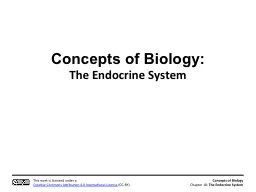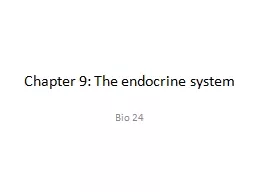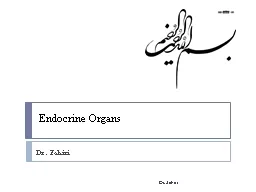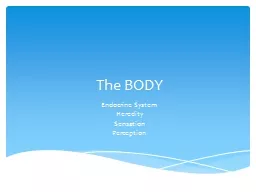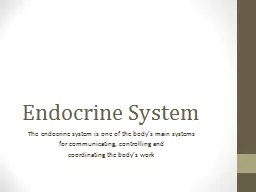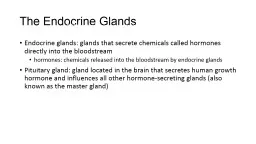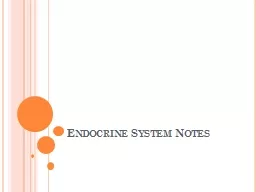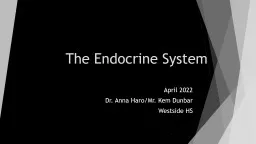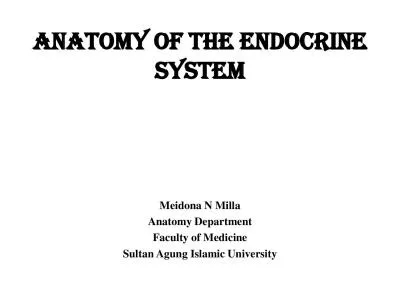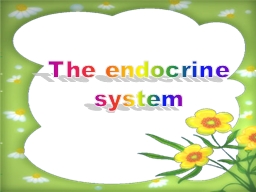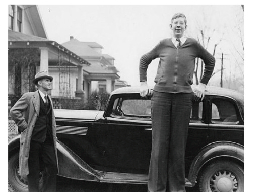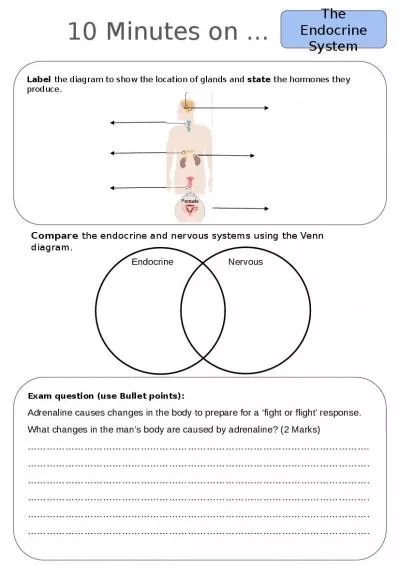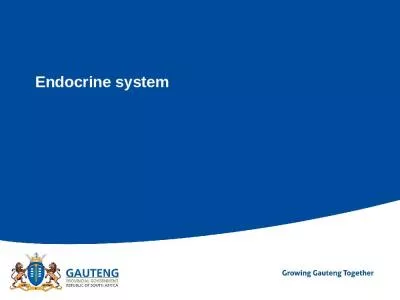PPT-Concepts of Biology: The Endocrine System
Author : mentegor | Published Date : 2020-06-17
The process of amphibian metamorphosis as seen in the tadpoletofrog stages shown here is driven by hormones credit tadpole modification of work by Brian
Presentation Embed Code
Download Presentation
Download Presentation The PPT/PDF document "Concepts of Biology: The Endocrine Syste..." is the property of its rightful owner. Permission is granted to download and print the materials on this website for personal, non-commercial use only, and to display it on your personal computer provided you do not modify the materials and that you retain all copyright notices contained in the materials. By downloading content from our website, you accept the terms of this agreement.
Concepts of Biology: The Endocrine System: Transcript
The process of amphibian metamorphosis as seen in the tadpoletofrog stages shown here is driven by hormones credit tadpole modification of work by Brian Gratwicke The structures shown here represent . Rayvin. Ewers. Savana Canary. Emily . Haimes. The Endocrine System. The endocrine system is sometimes at fault for osteoporosis.. Hormones produced by the endocrine system are released directly into the blood stream.. Bio 24. The endocrine system. One of two communication systems in the body. Consists of . hormones. : chemicals secreted into the blood that travel throughout the body to act on specific target cells. Dr. . Zahiri. Dr. Zahiri. The endocrine system includes a number of different cells, structures, and organs which are not necessarily related at the gross anatomical level. . 1. . Histologically the endocrine system includes all structures and organs that have endocrine secretory cells as the parenchymal tissue. . Heredity. Sensation. Perception. 1. Hormones can make you grow to be nine feet tall. . 2. Hormones can affect your ability to taste salty foods. . 3. Hormones can make you very sensitive to high-pitched sounds. . for . communicating, controlling and . coordinating . the body’s work. Endocrine System. Control . system . that . works along with the nervous . system to regulate body functions and maintain homeostasis.. hormones: chemicals released into the bloodstream by endocrine glands. Pituitary gland: gland located in the brain that secretes human growth hormone and influences all other hormone-secreting glands (also known as the master gland). Function. The endocrine system produces chemicals that control many of the body’s daily activities.. Also regulates long term changes such as growth and development.. Vocabulary. Endocrine glands: produce and release their chemical products directly into the bloodstream (then carrying throughout the entire body). (pp. 997 - 1008). There are two systems that regulate the body. The . nervous system. relays information to the body using ___ _________________________ that travel very _______, but the messages are short-lived. The . 2022. Dr. Anna Haro/Mr. Kem Dunbar. Westside HS. LEARNING Objectives . TEKS: . §130.231.(. c. )(1)(A, & B) and . §130.231.(. c. )(2)(A, B, C, F, & G) & (3)(B). Students will apply knowledge of human and cellular biology.. System Meidona N Milla Anatomy Department Faculty of Medicine Sultan Agung Islamic University LEARNING OBJECTIVES • At the end of the lecture, students should be able to d escribe : The posi The endocrine system . is one of the body's two major communication system the nervous system being the . other.. The endocrine system consist s of all those glands termed endocrine glands or gland of internal secretion . The endocrine glands are glands without excretory ducts that secrete hormones.. of the endocrine system and . hormones. . The endocrine (to secrete within) system influences metabolic activity by means of hormones (to excite). Role of Hormones and Endocrine . S. ystem:. Reproduction. Compare . the endocrine and nervous systems using the Ven. n diagram. . . Label . the diagram to show . the location of glands and . state . the hormones they produce.. Exam question (use Bullet points):. The nervous system and endocrine system controls different types of activities in the body. . They are jointly responsible for the functioning of all the different organs and systems, this is known as coordination.
Download Document
Here is the link to download the presentation.
"Concepts of Biology: The Endocrine System"The content belongs to its owner. You may download and print it for personal use, without modification, and keep all copyright notices. By downloading, you agree to these terms.
Related Documents

